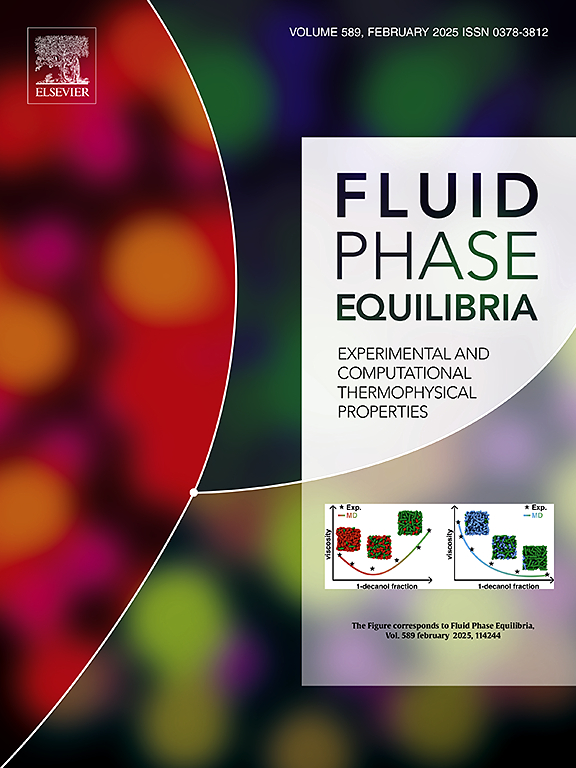Modeling heat capacity of liquid siloxanes using artificial intelligence methods
IF 2.8
3区 工程技术
Q3 CHEMISTRY, PHYSICAL
引用次数: 0
Abstract
In organic Rankine cycle (ORC) technology, heat capacity is an extremely important thermophysical property as it has significant implications for heat exchangers design as well as the determination of cycle performance. Given its importance, it is crucial that the heat capacity values used in the aforementioned applications are highly accurate, to ensure optimal performance and efficiency of ORC systems. Thus, the goal of this research is to develop precise data-driven models based on Random Forest, Decision Tree, AdaBoost, K-Nearest Neighbors, Ensemble Learning, Multilayer Perceptron Artificial Neural Network, Convolutional Neural Network and Support Vector Machine learning algorithms to accurately predict liquid siloxanes’ heat capacity as a function of molar mass, boiling point, temperature, and pressure. The findings suggest that nearly all the collected experimental data are technically appropriate for building the model. The analysis of sensitivity indicates a positive effect of temperature and negative effect of pressure, siloxane boiling point, and molar mass on the heat capacities. The evaluation metrics and graphical analyses indicate that the CNN-based model is the most accurate for the prediction task of heat capacity. It achieves the highest R-squared value (0.975042) and the lowest mean square error (0.000554) on the test set, along with the lowest average absolute relative error percentage (0.632605). These results highlight the CNN's superior ability to capture complex patterns and deliver precise predictions specifically for the prediction task of heat capacity.
求助全文
约1分钟内获得全文
求助全文
来源期刊

Fluid Phase Equilibria
工程技术-工程:化工
CiteScore
5.30
自引率
15.40%
发文量
223
审稿时长
53 days
期刊介绍:
Fluid Phase Equilibria publishes high-quality papers dealing with experimental, theoretical, and applied research related to equilibrium and transport properties of fluids, solids, and interfaces. Subjects of interest include physical/phase and chemical equilibria; equilibrium and nonequilibrium thermophysical properties; fundamental thermodynamic relations; and stability. The systems central to the journal include pure substances and mixtures of organic and inorganic materials, including polymers, biochemicals, and surfactants with sufficient characterization of composition and purity for the results to be reproduced. Alloys are of interest only when thermodynamic studies are included, purely material studies will not be considered. In all cases, authors are expected to provide physical or chemical interpretations of the results.
Experimental research can include measurements under all conditions of temperature, pressure, and composition, including critical and supercritical. Measurements are to be associated with systems and conditions of fundamental or applied interest, and may not be only a collection of routine data, such as physical property or solubility measurements at limited pressures and temperatures close to ambient, or surfactant studies focussed strictly on micellisation or micelle structure. Papers reporting common data must be accompanied by new physical insights and/or contemporary or new theory or techniques.
 求助内容:
求助内容: 应助结果提醒方式:
应助结果提醒方式:


